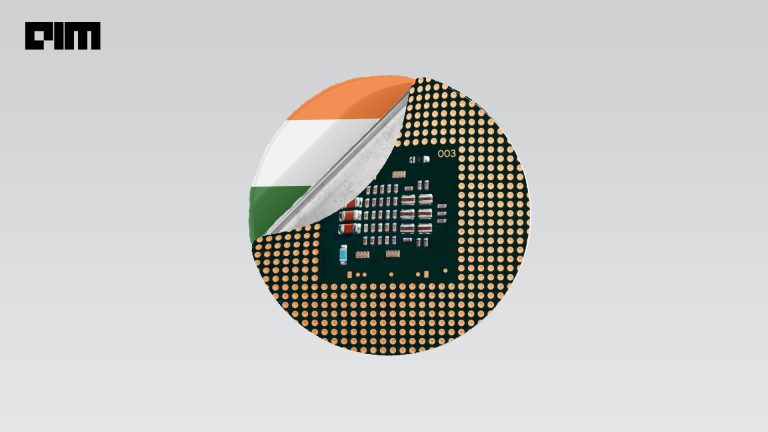|
Listen to this story
|
Recently, a report by the Semiconductor Industry Association (SIA) and Oxford Economics said that the semiconductor industry in the US could face a shortage of 67,000 workers by 2030. Deloitte, in its report, has predicted that the shortall could be around 70,000 and 90,000. This issue is not limited to the US, but has been observed in other markets as well. Burn Lin, a former vice president at TSMC, told the New York Times that chip companies in Taiwan are struggling to find the right candidates.
But India, despite not having any semiconductor prowess, has a strong workforce that contributes a lot to the global semiconductor industry. Indian engineers account for around 20% of the world’s semiconductor design workforce, which is quite significant. Over one lakh Very Large Scale Integration (VLSI) design engineers are engaged in both global and domestic semiconductor and design service companies. “India made significant strides over the last three decades by supplying engineering talent to the worldwide IT and semiconductor industries through product development and service industries,” Sudershan Vuruputoor, managing director, SiMa.ai India Pvt Ltd, told AIM.
India can meet the global demand
In Taiwan, to meet the shortfall, TSMC adopted a new recruitment approach expanding hiring channels, and raising base salary for master’s graduates. However, Taiwan does not churn out enough graduates to sustain its domestic chip industry. To meet the growing demand, TSMC directly recruits from some of the top educational institutions in India such as IIT Bombay.
“Starting with top institutions like the IITs and IISc there was a very strong emphasis on VLSI education over the last three decades. Initially, this was to support SCL, but it soon ended up in all the Indian offices of global majors,” T R Shashwath, co-founder and chief executive at Mindgrove Technologies Pvt Ltd, told AIM.
TSMC is not the only chipmaker hiring from India. Other players, including Intel, also look at India to meet their workforce requirements. Given India’s strong workforce, many chipmaking companies such as Samsung, Applied Materials and Lam Research, for example, have set up research labs in India. Recently, US-based chipmaker, Advanced Micro Devices (AMD), said that it will set up its biggest R&D facility in Bengaluru, Karnataka.
Moreover, companies involved in testing and packaging of chips are also actively hire in India. “India, of all the candidate nations, has the highest ability to do so, not only because we can supply the manpower itself but going forward, a large portion of the cutting-edge design innovation will come out of here,” Shashwath said.
In the coming 10 years or so, the demand for chips is only going to substantially increase due to a strong demand from automotive, computation and data storage industries. Chipmakers such as TSMC, Intel and Samsung have plans to expand their capacity. To meet the demand, newer fabs will emerge in different parts of the world. For example, TSMC has already announced plans to open fabs in the US and Japan. Hence, Vuruputoor also believes India is well positioned to meet the global semiconductor talent demand.
However, he raises one important issue. Even though every year, India churns out 15 lakh fresh engineers, a majority of them remain unhirable. “It is particularly important to improve the quality of knowledge imparted at engineering colleges and technological institutes. Utilisation of available engineering seats is only 50% annually, and only one-sixth of 15 lakh engineering students who graduate annually are employable. The gap in demand can be met just by making sure that most graduating engineers are employable,” he told AIM.
Importance of semiconductor research and education
To meet the semiconductor workforce shortfall, India needs to ensure that the engineering graduates possess the right skill sets to meet the growing demand. Indian Prime Minister Narendra Modi, while speaking at the recently held Semicon India 2023 event, said that around 300 colleges will start providing semiconductor education to its students.
The All India Council for Technical Education ( AICTE) recently announced two new courses — diploma in integrated circuit (IC) manufacturing and BTech or BE (electronics) in VLSI design and technology. Additionally, earlier this year, the Indian Institute of Science (IISc)-TalentSprint partnership announced a PG-level advanced certification programme in micro and nanoelectronics used for neuromorphic and quantum technologies. The partnership will provide industry-oriented training to empower next-generation semiconductor professionals. Also, as per reports, Taiwan could also help India train talent for electronics and semiconductors.
Even though India’s aim is to make itself self-reliable and establish itself as a semiconductor manufacturing hub, the investment in semiconductor-related education will prove to be crucial if India is to play a part in meeting the growing semiconductor workforce demand.
Can India take advantage?
Despite announcing fabs in the US and Japan, TSMC postponed mass production in its Arizona fab to 2025 due to skilled labour shortage and equipment relocation challenges. Even though not confirmed, reports suggest TMSC could partner with Foxconn, another Taiwanese contract manufacturer, to set up a fab in the country.
Here, the Indian government can use its workforce to its advantage and attract not just TSMC, but other chipmakers to the country. Coupled with initiatives such as the Production Linked Incentive (PLI) scheme, and creating a favourable ecosystem for chip manufacturing, the Indian government can make India a more viable option.
So far, Micron, a US-based chipmaker has already revealed its plan to invest USD 2.7 billion to develop a new assembly and test facility in Gujarat, which will serve as the centre for the manufacturing of DRAM and NAND products. Moreover, Chandrasekhar stated that the government will soon announce a 40 nm semiconductor fabrication unit under the modified semiconductor investment scheme.
Moreover, given India is providing engineering talent to the worldwide IT and semiconductor industries through product development and service industries for over three decades now, it translates to forex inflows contributing to the growth of India’s economy, according to Vuruputoor. “If we are able to meet the growth in demand by enabling more of the graduating engineers to be employable, India can see a proportional increase in its forex reserves,” he said.















































































